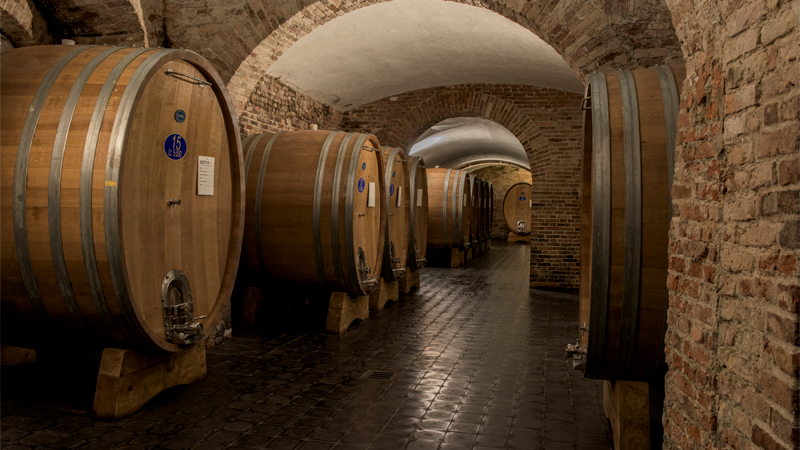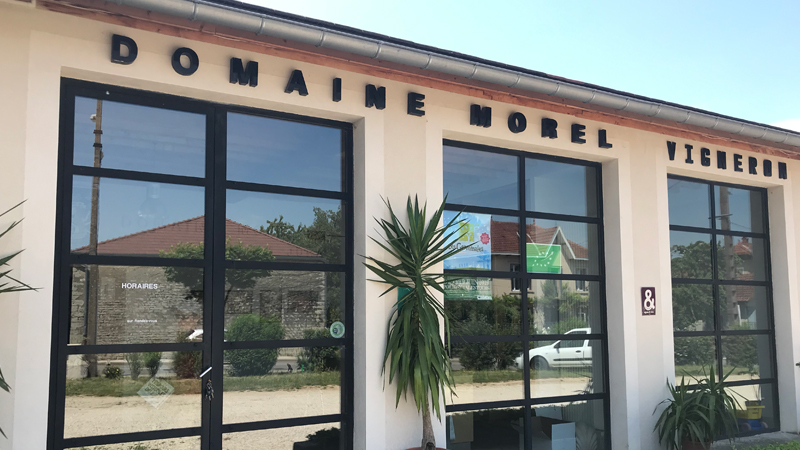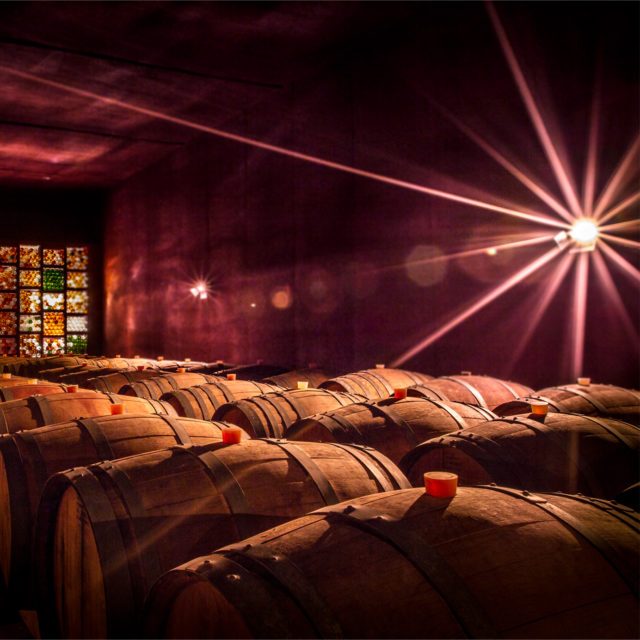For nearly a century, consumers have looked to appellation boards for regional marks of quality and typicity. Regulations on grape varieties, yields, and aging times were just a few of the many standards implemented to create recognizable, regionally specific wines. In Europe, appellation regulations tend to be stricter than in other areas of the world — which isn’t always a good thing.
Now, some winemakers are questioning whether those rules are outdated, and others have gone so far as to abandon regional labeling. VinePair reached out to winemakers, importers, and sommeliers to understand why they’ve declassified their wines.
Freedom From Restrictions
After feeling held back by appellation rules, Veneto-based Roberto Anselmi chose to break free from Italy’s DOC system back in 2000. Looking back into history, DOC (Denominazione di Origine Controllata)- designated wines generally signified a higher level of quality and regional typicity. There’s an even more restrictive designate, DOCG (Denominazione di Origine Controllata e Garantita), denoting wines that have met the strictest standards and — in theory — offer superior quality.
However, it was Anselmi’s desire to make independent choices in both the vineyard and in the cellar, as well as the “freedom to make great wine without inhibitions,” that propelled him to abandon DOC labeling. In Veneto, Soave’s DOC requires that regional white wines be produced from at least 70 percent Garganega, with a handful of other varieties permitted. Anselmi chooses to add 10 percent Sauvignon Blanc to his cuvée (a grape variety that’s not permitted). Thus, his wines are not eligible for DOC labeling. Instead, he labels his wines as IGT (Indicazione Geografica Tipica), a less strict appellation level that was created in 1992 for winemakers producing wines that don’t necessarily meet all the DOC regulations.
Viewed as radical by his neighbors, this choice has granted Anselmi a viticultural liberty that the DOC never provided. Anselmi penned an open letter to the government to share his woes. “I’m walking out of Soave and leaving it to its fate,” he said. “Let it wear out its vital cycle, good luck to it. I want my freedom.” Anselmi notes that the DOC standards for Soave wines allow for higher yields and force pergola training systems in the vineyard (he prefers to use lower yields and guyot-trained vines), so he argues that the quality of his wine is actually higher when declassified.

A Return to the System
Elsewhere in Italy, Angelo Gaja began declassifying his family’s wines back in 2000, beginning with his 1996 vintage. Gaja took a handful of his wines — Costa Rusi, Sorì Tildin, and Sorì San Lorenzo — and declassified them from Barbaresco DOCG to Langhe DOC. This declassification allowed Gaja to add Barbera into his blends, which was ironically a return to the past, as the grape was historically permitted within the appellation rules for generations prior.
Gaja upheld this decision for 17 vintages and continued to add up to 15 percent of Barbera into his Piemontese reds. A few years back, Gaja’s daughter, Gaia Gaja, renounced the use of Barbera and brought the wines back to 100 percent Nebbiolo — and back to the DOCG appellation. “Every generation has its own path to follow and has the right to do things in its own way,” she says, highlighting her pursuit of the “purest expression of the Nebbiolo variety.”
For Some, Access Is Denied
In some cases, adhering to appellation rules can still result in being excluded from the system, even if the winemaker is seeking its approval. Such was the case for Jura-based Valentin Morel back in 2019. Morel, a successful young winemaker with a hefty following among the international natural wine community, had a sought-after wine rejected by the appellation board, as they deemed it faulty.
“It’s not necessarily about quality, but more about typicity,” explains Josh Adler, Morel’s American importer (Paris Wine Company). Morel’s Saint Savin Chardonnay 2016 was ultimately rejected for having excess amounts of volatile acidity, which Adler notes is a typical reason why appellation boards reject wines.
Upon receiving his rejection, Morel wrote a letter to the AOP (Appellation d’Origine Protégée) board to plead his case, namely to call out the lack of acceptance for natural wines in the AOP. “The contrast between my commercial reality and the observations of the monitoring committee is so strong that it leaves me speechless,” he says, leading him to question the committee’s understanding of natural wines and their flavor profiles.
“Some will find reduction prohibitive, others will love it,” Morel says, noting that the wine is highly sought after by consumers, and that the entire stock of Saint Savin Chardonnay sold out.

Pursuing Natural Wine Styles
Elsewhere in the wine world, Anthony Guix founded Domaine Matin Calme in Roussillon in 2006, and opted out of classifying his wines in France’s AOP system early on. In Roussillon, there are 15 AOPs and three larger IGPs (Indication Géographique Protégée). Similar to Italy’s DOC system, an AOP designation in France is the “highest” level of classification, followed by the more regionally focused IGP, which has fewer restrictions. Vin de France, which is the “lowest” designation, provides winemakers with the fewest restrictions, and therefore the most freedom in the vineyard and cellar.
At Domaine Matin Calme, Guix opted to make Vin de France wines. “Today, it’s common to make Vin de France wines, but when I started, it wasn’t. I definitely lost sales for this reason,” Guix says.
One key reason Guix decided not to pursue AOP certification is that Roussillon’s appellation system requires the creation of blends, and Guix cultivates 100-year-old Carignan vines, which he prefers to produce varietally. He also points out that Roussillon’s many co-ops work closely with the INAO (National Institute of Labels of Origin), which collectively decided to mandate the usage of Syrah as a “bettering” grape for its regional wines. Guix says he prefers not to use Syrah, finding that it is not adapted to the region and produces wines that are not easy-drinking.
To this day, Guix remains uninterested in partaking in the appellation system. “I chose to make natural wine without input, so I do not like the AOC’s constraints,” he says. “I am very attached to my freedom. In Vin de France labelings, I feel free, and that is precious for me.”
A Quest for Integrity Over Labels
Master Sommelier Pascaline Lepeltier works with a large number of declassified wines at her New York City-based restaurant, Racines. She notes that many winemakers choose to declassify their wines because the appellation system is failing to implement what they initially sought to do: create regional typicity. “The appellation systems are authorizing and approving a lot of wines that are not typical of their place,” she says. “Many winemakers realized it was very hypocritical and preferred to get out to be able to create an expression of their place that they deem to be more appropriate.”
Lepeltier expresses her excitement for declassified wines from her native region of Anjou, for example, as well as the southerly regions of the Rhône and Languedoc. She also highlights Guix’s blend-versus-varietal problem as a reason why Languedoc is such a hotbed for Vin de France wines. “You can’t make a varietal wine in the Côtes du Rhone, which is stupid, because some parts of the Languedoc and the Côtes du Rhone are beautiful for 100 percent Carignan or Grenache,” she says, reiterating her disagreement with the appellations’ demands for “improver” grapes such as Syrah and Vigonier.
On the importer side, a handful of natural wine-focused books are now dominated by declassified wines. In New York City, Guix’s importer, Zev Rovine of Zev Rovine Selections, supports vignerons who farm and vinify in the ways that they — not the appellation boards — see fit. “The reasons range from political to practical, and I think the system needs drastic reform,” Rovine says.
Rovine says he finds many facets of the AOP system to be problematic, citing Sancerre as an example. “The people that decide if a wine fits or not are often from the largest wineries in the region and benefit from conformity to their style,” he explains. This desire for uniformity has resulted in wineries gaining permission to chaptalize and use excess cultivated yeasts and filtration methods. “It’s a legal collusion to conform wines in the cheapest way,” he says.
For Rovine — as well as other importers, sommeliers, and winemakers — the freedom to make quality wine choices without restrictions surpasses the benefits of an AOP regulation on their labels.
This story is a part of VP Pro, our free platform and newsletter for drinks industry professionals, covering wine, beer, liquor, and beyond. Sign up for VP Pro now!
